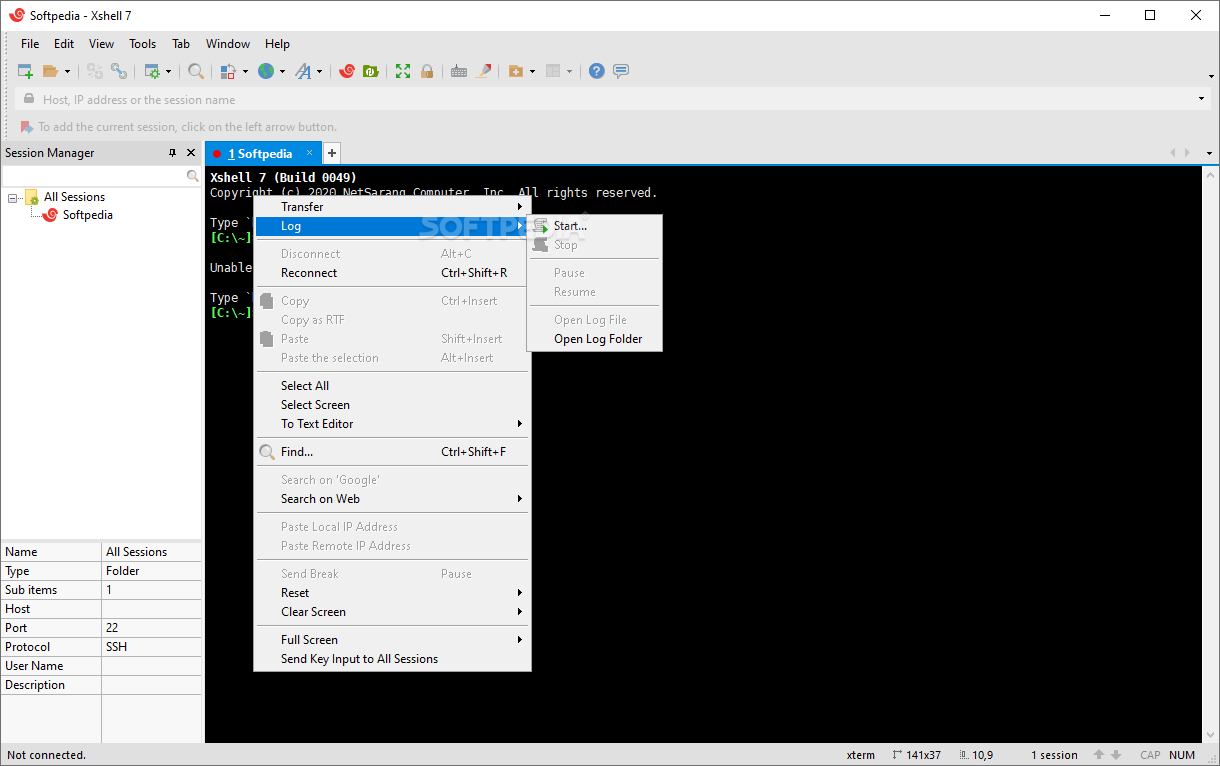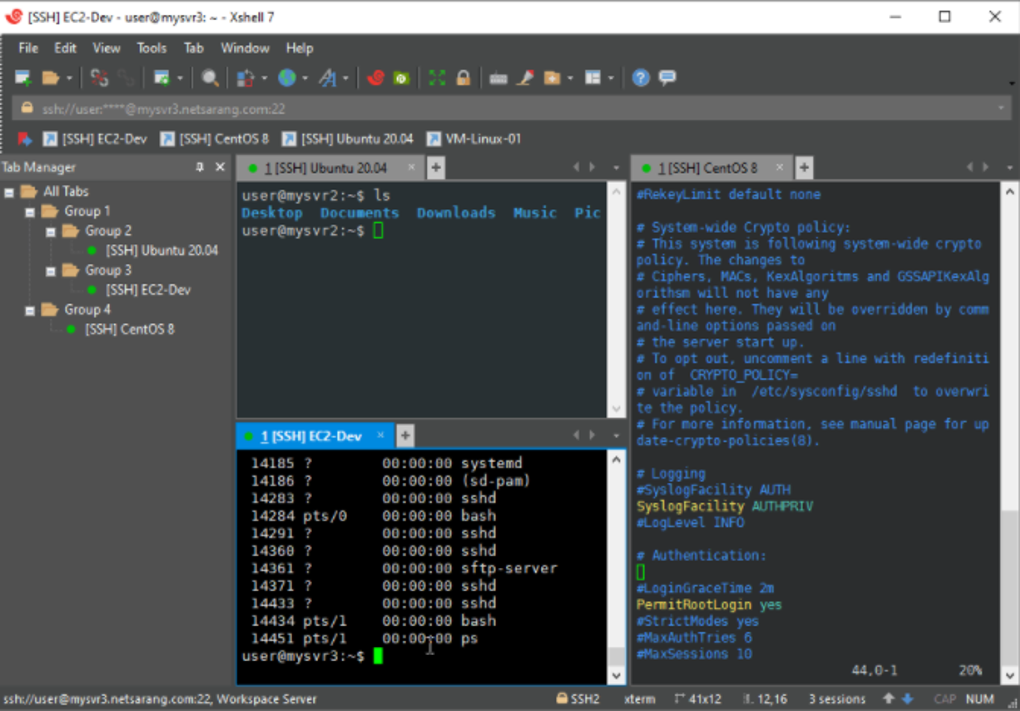

Xshell windows#
Xshell free#
These are the main reasons why Xshell Free is uninstalled by users: Some experience issues during uninstallation, whereas other encounter problems after the program is removed. It seems that there are many users who have difficulty uninstalling programs like Xshell Free from their systems. What usually makes people to uninstall Xshell Free You came to the right place, and you will be able to uninstall Xshell Free without any difficulty. The following table lists the domain names used in different system time.Xshell is a multilingual emulation program that supports protocols such as SSH, SFTP, TELNET, RLOGIN and SERIAL, offering you a command line shell to easily and securely gain access to Unix/Linux hosts directly from your Windows PC.ĭo you have trouble completely uninstalling Xshell Free from your system?Īre you looking for an effective solution to thoroughly get rid of it off the computer? Do not worry!
Xshell update#
In this case, update the software and check the security of the current host. If the DNS request for resolving the domain name is detected, it indicates that your information is being leaked to remote attackers. The domain name to be resolved in August is. The backdoor sends different requests for resolving domain names in different periods. After receiving the domain name resolution request, the DNS server used by the attacker can obtain user information by decrypting the prefix information in the domain name.

)The backdoor program collects user information and encrypts the information as the prefix of the domain name to be resolved.

Xshell code#
(For further analysis, download code from. The logic without junk instructions is still complicated. rdata section (the excess 0x1000 bytes mentioned earlier), and finally execute the decrypted code.Īfter decryption is complete, the executable code is obfuscated by junk instructions. The VirtualAlloc function is used to allocate writable and executable memory space, and then decrypt the data in the. rdata section, and will be called when nssock2.dll is loaded and initialized. Here, the sub_1000e600 function address is added to the function pointer array at the beginning of the. The calling relationships between the two functions are as follows: It is found that the backdoor version has two more functions, namely, sub_1000e600 and sub_1000c6c0, than the latest version. The bindiff is used to compare the calling logic in nssock2.dll files of the two versions. The binary comparison result also proves this.

The MessageBoxA and VirtualAlloc functions are the excess functions that are respectively imported to USER32.dll and KERNE元2.dll. Eight bytes indicate that two more functions are imported to the backdoor version. idata section is used to store the addresses of externally imported functions. rdata section is about 0x10000 bytes longer. idata section in nssock2.dll with the backdoor is 8 bytes longer than that in nssock2.dll without the backdoor, and the. nssock2.dll with the backdoor is much larger than that without the backdoor.Ĭheck the size of each section of the two files. The nssock2.dll libraries of versions 1322 (with a backdoor) and 1326 (latest official version without the backdoor) are compared. If your computers are affected by the backdoor, perform security check in a timely manner to eliminate the possibility of being inserted with the backdoor. To avoid the impact of the backdoor, update the Xshell and related programs to the latest versions in a timely manner. Then the hacker obtained basic user information through the backdoor and even inserted a more powerful backdoor for remote command execution.Īll product versions were updated on August 5. It is assumed that someone managed to hack into the developer's host or compilation system. The backdoor was found in nssock2.dll 5.0.0.26, which was modified on July 13, 2017. It is a dependent component required by Xshell and related products. The backdoor module lurks in the nssock2.dll library that has a valid signature within Xshell software suites. On August 7, 2017, NetSarang stated that backdoors were discovered in the following product versions that were released on July 18: Xshell manages remote servers based on SSH, Telnet, and other protocols.Xshell and other programs provide secure connectivity solutions to manage Linux servers on Windows platforms. Xshell is a remote connectivity program developed by NetSarang, which also provides Xmanager and Xftp.


 0 kommentar(er)
0 kommentar(er)
